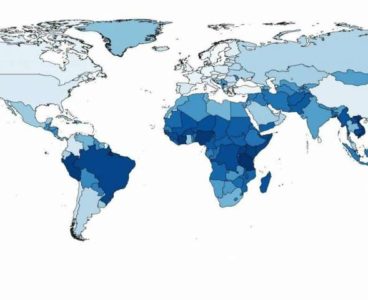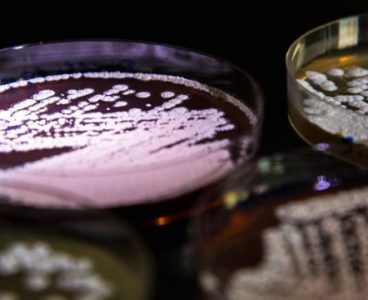A comprehensive analysis of sewage collected in 74 cities in 60 countries has yielded the first comparable global data showing the levels and types of antimicrobial resistant bacteria present in healthy people. The National Food Institute, Technical University of Denmark, headed the study, which was conducted by an international team of researchers. In a metagenomics…
Nanoclay-reinforced Hydrogel Turns Stem Cells into Bone
Assistant Professor Alireza Dolatshahi-Pirouz and colleagues have developed a hydrogel that combines synthetic materials with living cells, and can turn stem cells into bone without adding external growth or differentiation factors. More than 50 percent of women and 20 percent of men over the age of 50 will experience a bone fracture during their lifetime.…
Quantum Electronics Aided by Novel Nano Material
An international team led by Assistant Professor Kasper Steen Pedersen, DTU Chemistry (Technical University of Denmark), has synthesized a novel nano material with electrical and magnetic properties making it suitable for future quantum computers and other applications in electronics. Chromium-Chloride-Pyrazine (chemical formula CrCl2(pyrazine)2) is a layered material, which is a precursor for a so-called 2D…
Double Graphene Sandwich Defends Against Corrosion
These words belong to Professor Peter Bøggild after a four-month period where a novel type of anticorrosion coating was tested. The nanomaterial graphene plays a crucial role in this new type of coating. Furthermore, the result is a response to a line of studies showing graphene only provides a very short-term protection against corrosion, and…
Kepler Scientists Discover Almost 100 New Exoplanets
“We started out analyzing 275 candidates of which 149 were validated as real exoplanets. In turn 95 of these planets have proved to be new discoveries,” said American PhD student Andrew Mayo at the National Space Institute (DTU Space) at the Technical University of Denmark. “This research has been underway since the first K2 data…
The Missing Link Between Exploding Stars, Clouds, and Climate on Earth
The study reveals how atmospheric ions, produced by the energetic cosmic rays raining down through the atmosphere, helps the growth and formation of cloud condensation nuclei – the seeds necessary for forming clouds in the atmosphere. When the ionization in the atmosphere changes, the number of cloud condensation nuclei changes affecting the properties of clouds.…
Scientists Solve 30-Year Old Mystery on How Resistance Genes Spread
To win the war against antibiotic resistant super bugs, scientists seek to find the origin of resistance genes. Further, they try to identify how the genes are introduced to disease-causing bacteria – so-called pathogens. Identifying where resistance genes come from and how they spread somewhat compares to finding patient zero in an outbreak, which is…
Graphene Works Wonders for Electronic Devices
Solar Storms Trigger Surprising Phenomena Close to Earth
Eruptions on the Sun’s surface send clouds of electrically charged particles towards Earth, producing solar storms that–among other things–can trigger the beautiful Northern Lights over the Arctic regions. But the storms may also have a strong impact on the efficiency of communication and navigation systems at high latitudes. It is therefore important to study the…
One Step Closer to Personalized Antibiotic Treatment
Important Bio-Chemical Produced on a Large Scale by E. Coli
If you had a company that manufactured valuable ingredients for chemicals like detergens or paint, you would probably like to produce the ingredients in large quantities, sustainably, and at a low cost. That’s what researchers from The Novo Nordisk Foundation Center for Biosustainability — DTU Biosustain — at DTU can now do. The researchers have…









